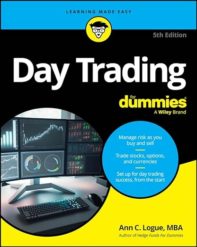In financial terms, an investment is something that increases in value because it generates streams of money from dividends, interest, or rent. A store of value is something that, over the long term, is expected to increase at the rate of inflation but no more. Examples would be land and commodities or land. The problem occurs when collecting is confused with investing.
There’s a new short documentary out by Chris Robinson called “Bankrupt by Beanies”, about a family that spent about $100,000 on Beanie Babies in the 1990s in the hope of selling them for a fortune to send the kids to college. The Beanie Babies were never sold and are now in storage.
I remember that time well. We lived in California then. My kid was a baby when Beanie Babies were at their peak, and he received some Beanie Babies as presents. We picked up another when we went to see the Oakland As play the Cleveland Indians on Beanie Baby giveaway day. Someone rented a plane to fly over the stadium with an ad offering to buy the Beanie Babies! I sold any that had any extra value at all, on eBay when it was a new thing. People told me to hang on to them, as they would become even more valuable in the future, but I decided to hit the bid when it was in front of me.
Someone paid $86 for an Oakland A’s edition Peanuts the Elephant. I put the money in the college fund.
About ten years after that, my husband took over his grandmother’s affairs. She moved into a nursing home, and he sold off her Hummel figurines. She had long believed that the Hummels were valuable; when my husband wrote up the listings, he found that the market was flooded with them. All the grandchildren in America who inherited Hummels didn’t want them and put them on eBay. (We kept one as a memento.)
Collecting can be fun. In the documentary, Chris Robinson talks about how the Beanie Baby collection was a great family bonding experience. If you like what you are collecting, and you can afford it, go! Collect it! There’s nothing wrong with it.
Some collectibles are stores of value, of a sort: coins and stamps, for example. And some collectibles have characteristics of investments, especially fine arts and antiques. These have both quality and scarcity going for them.
Beanie Babies, Hummels, Precious Moments figurines, and even autographed photos of Bobby Hull, are not particularly scarce. You can’t make a new Picasso, but you can make a new Baldy the Eagle. (That’s why Baldy the Eagle is going for $6.95 on eBay – it didn’t hold its value once adjusted for inflation.) The scarcity has been manufactured. They have little intrinsic value – you can’t use them for postage or melt them for the metal.
If you want to save money for a kid for college, use traditional investments. If you don’t know what else to do, a combination of savings bonds and a basic U.S. stock market index mutual fund is a good way to get started. If you want to give a new baby something that will be valuable later in life, consider a savings bond, a mint set of stamps or coins for the year the child was born, or a single share of stock. These will last longer than any cute outfit, and they are more likely to be used for college or treasured later in life than a Beanie Baby.
(This post is cross-posted on my frugal living blog, Chicago on the Cheap.)


